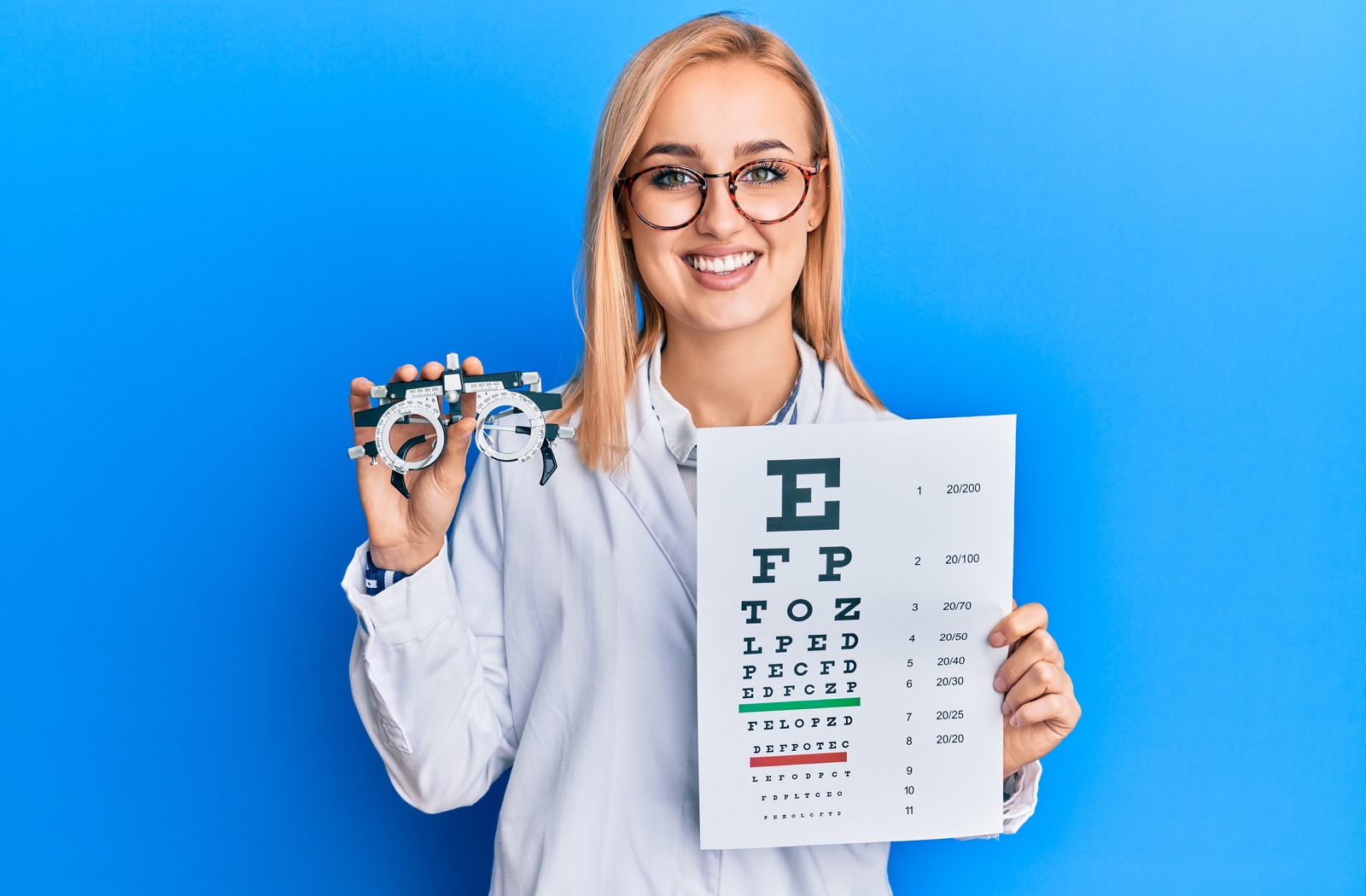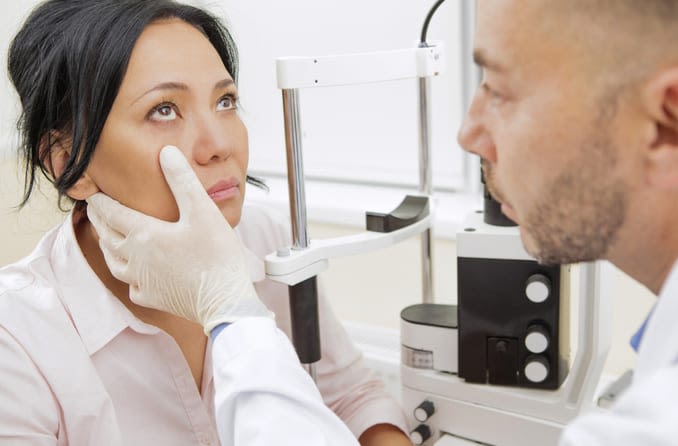Why Picking an Eye Doctor Optometrist is Essential for Your Eyes
Why Picking an Eye Doctor Optometrist is Essential for Your Eyes
Blog Article
Discovering the most up to date Technological Improvements in Optometry and What They Mean for Optometrists
In the ever-evolving area of optometry, recent technical developments are reshaping just how practitioners come close to eye care. From the precision of Optical Coherence Tomography to the nuanced understandings supplied by AI-driven analysis devices, these innovations are setting brand-new criteria in individual evaluation and therapy. Teleoptometry is poised to redefine availability, making certain that knowledge goes beyond geographical constraints. As these innovations permeate the method, eye doctors are confronted with the challenge of embracing these devices to enhance individual end results. The concern stays: how will these technological shifts redefine the functions and obligations within the profession?
Advancements in Diagnostic Tools
Advancing the field of optometry, developments in analysis devices have actually changed the method eye treatment experts assess and diagnose ocular problems and aesthetic impairments. The previous decade has observed considerable technological innovations, making it possible for more accurate and detailed evaluations. Optical Comprehensibility Tomography (OCT), for instance, offers high-resolution cross-sectional photos of the retina, enabling the early detection of diseases such as glaucoma and age-related macular deterioration. This non-invasive imaging technique has ended up being indispensable in contemporary optometric method.
One more key innovation is the intro of innovative corneal topography systems, which map the surface area curvature of the cornea with accuracy. These tools are specifically helpful for suitable get in touch with lenses and detecting corneal disorders. In addition, electronic retinal imaging has changed typical ophthalmoscopy, offering in-depth, breathtaking sights of the retina that facilitate thorough visual exams.
The advancement of wavefront aberrometry has additionally been essential, enabling the evaluation of refractive errors with unparalleled precision (Optometrist Chino). This innovation aids in personalizing rehabilitative lenses and enhancing surgical outcomes for refractive surgeries. Jointly, these diagnostic developments equip optometrists to supply premium individual treatment, making sure very early intervention and customized treatment strategies, eventually improving visual health and wellness end results
AI in Patient Management
Building on the structure of sophisticated diagnostic tools, the incorporation of expert system (AI) in patient monitoring stands for a transformative leap for optometry. AI systems are increasingly utilized to boost efficiency, precision, and personalization in patient treatment. By examining vast amounts of data, AI can recognize patterns and anticipate prospective ocular conditions, allowing eye doctors to tailor treatments a lot more properly. This ability is crucial in handling persistent eye conditions such as glaucoma and diabetic person retinopathy, where very early discovery and continuous tracking are crucial.
Additionally, AI-driven platforms facilitate streamlined patient interactions and management procedures. Automated organizing, digital examinations, and personalized follow-up plans not just boost person complete satisfaction yet also maximize time management for experts. These systems can triage clients based upon the necessity of their conditions, making sure that those in critical requirement get timely focus.
In addition, AI enhances decision-making by supplying eye doctors with evidence-based suggestions and treatment pathways. By incorporating information from digital health and wellness records, AI tools provide insights that notify clinical decisions, decreasing the danger of mistakes and enhancing client results. As AI remains to advance, its role in patient monitoring will likely expand, improving the landscape of optometric care.
Advances in Retinal Imaging
In the world of optometry, retinal imaging has observed amazing technological improvements that are enhancing diagnostic capacities and client treatment. Technologies such as Optical Coherence Tomography (OCT) and fundus photography have transformed exactly how optometrists visualize and assess the retina. OCT, in particular, provides high-resolution, cross-sectional photos of the retina, permitting the in-depth examination of its layers. This capability is vital for early detection and management of conditions like glaucoma, diabetic retinopathy, and age-related macular deterioration.
Enhanced imaging modalities like OCT angiography are more refining analysis accuracy. This non-invasive method maps blood flow in the retina, offering essential insights right into vascular wellness without the need for dye shots. Additionally, flexible optics technology is being integrated right into retinal imaging systems to remedy eye aberrations, delivering extraordinary image clearness. Such advancements help with the identification of minute retinal changes that could represent illness development.
Furthermore, innovations in expert system are increasing retinal imaging by enabling automatic evaluation of large datasets. These systems assist optometrists in determining patterns a measure of pathology, thus boosting analysis precision and efficiency. Collectively, these technologies are changing retinal imaging into a keystone of modern-day eye treatment, improving results and expanding restorative opportunities.
Teleoptometry's Growing Duty
Teleoptometry is significantly ending up being a vital component of eye care, driven by advancements in electronic communication and analysis tools. This is specifically beneficial in rural and underserved locations where informative post accessibility to specialized eye treatment is usually restricted.
The integration of expert system (AI) further boosts teleoptometry, making it possible for the analysis of visual data and assisting in the detection of ocular problems such as glaucoma and diabetic person retinopathy. AI-powered algorithms can rapidly analyze complex imaging information, providing eye doctors with valuable insights that bolster professional decision-making.
Furthermore, teleoptometry sustains continuity of treatment through seamless combination with digital health and wellness records (EHRs), allowing eye doctors to preserve comprehensive client histories. This ensures that people get individualized and see this regular treatment also when talking to different experts.
Despite these advantages, difficulties stay, including making sure information safety and security and taking care of individual assumptions. Nonetheless, teleoptometry stands for a significant stride in the direction of more obtainable, efficient, and patient-centered eye care. As innovation advances, its duty is positioned to increase further.

Future Fads in Eye Treatment
A myriad of ingenious patterns is readied to improve the future of eye care, driven by technical advancements and the progressing requirements of patients. One significant trend is the assimilation of expert system (AI) in diagnostics, which promises to boost the precision and efficiency of eye evaluations. AI algorithms can evaluate substantial quantities of information from retinal pictures, possibly detecting conditions like diabetic retinopathy and glaucoma earlier than typical methods.
Moreover, personalized medicine is gaining traction in optometry, with genetic testing notifying personalized treatment strategies. This strategy intends to enhance person results by tailoring treatments to individual genetic profiles. Wearable modern technology, such as clever contact lenses, is likewise coming up, supplying real-time tracking of intraocular pressure or glucose levels, hence supplying continuous understandings into systemic and eye health.
The fostering of enhanced fact (AR) and digital fact (VR) in training and patient education is another arising trend. These technologies use immersive experiences that can boost understanding and skills both for clients and eye doctors. As these my review here patterns develop, optometrists must remain abreast of technological developments to offer innovative care, making sure better person end results and contentment in the vibrant landscape of eye care.
Conclusion

Jointly, these analysis advancements empower optometrists to deliver remarkable patient treatment, guaranteeing early intervention and tailored treatment strategies, ultimately boosting visual health outcomes.

As these modern technologies continue to progress, eye doctors should adjust and incorporate them right into method, eventually maximizing operations effectiveness and boosting the criterion of eye treatment provided to people.
Report this page